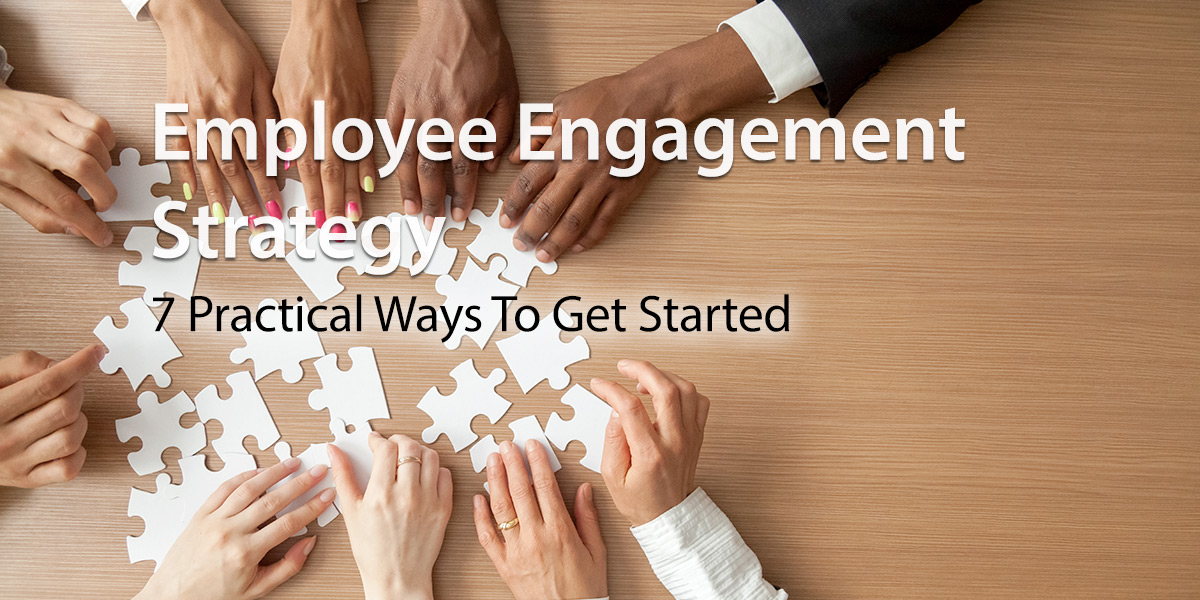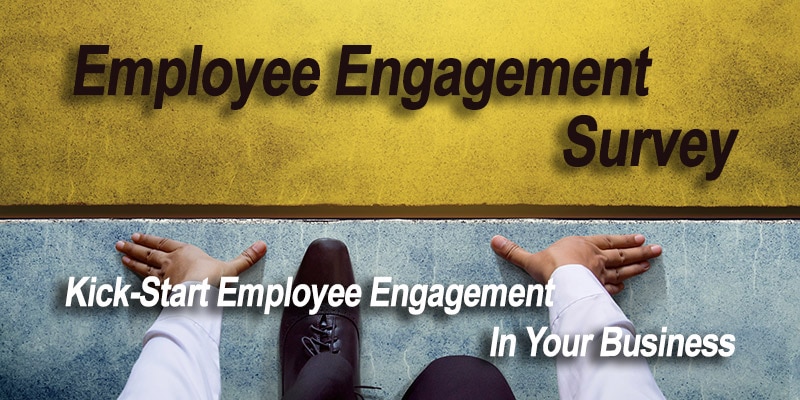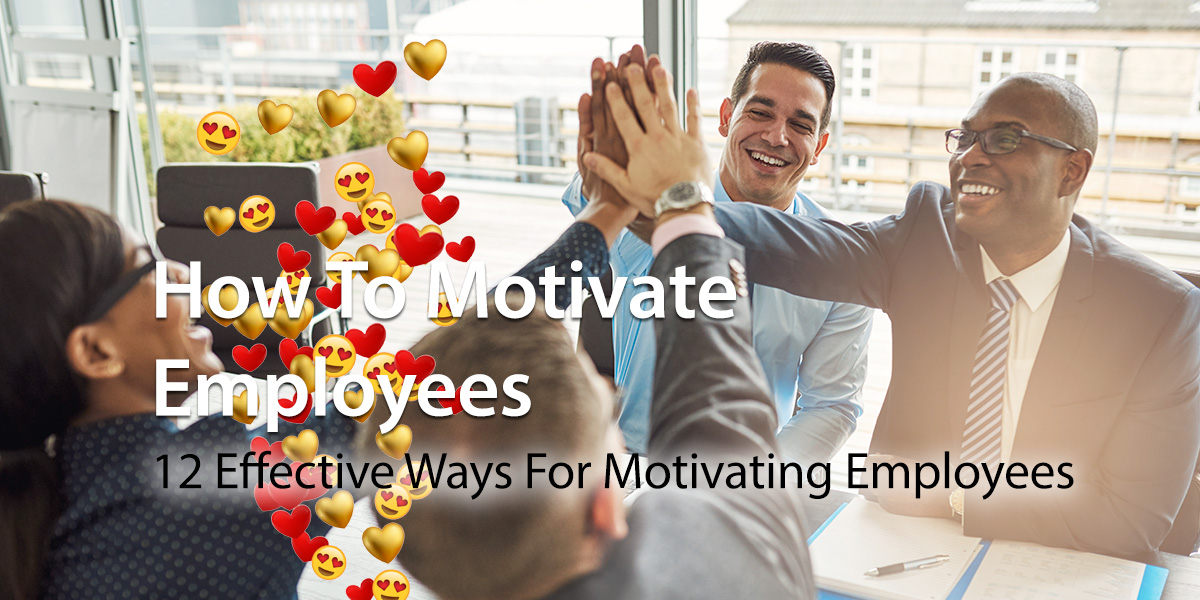You have read the research and checked the stats. You understand an employee engagement strategy is a must-have for any business. But when it comes to fleshing out the details, things get a bit murky. If that sounds familiar, you are not alone. Many company executives struggle when it comes to taking action on employee engagement, even though they know it’s vital.
One of the problems with employee engagement is it means different things to different people. Unlike other business activities such as sales, employee engagement is soft around the edges. For some, it’s all about motivation and job satisfaction. While for others, it’s more to do with employees feeling happy about coming into work.
The truth is employee engagement is the emotional connection staff have to their work, the company, and its mission. Engaged employees feel a strong emotional bond that drives them to go above and beyond. They tend to be more motivated, satisfied, and happier in their jobs. And while every worker will add to the bottom line, engaged ones add much more.
Gallup has made it clear what businesses stand to gain by striving for an engaged workforce. Reduced turnover and absenteeism, increased productivity and improved customer relations are just some of the benefits.
Here at MyHub, we have been supporting businesses achieve their employee engagement goals for many years. And we have learned a thing or two along the way about what works in practice.
You have landed in the right place if you are looking for tried and tested employee engagement strategies. Use these tricks of the trade to fire up employee engagement in your organization.
Tips On Developing An Employee Engagement Strategy
To begin, here are four top tips to guide the development of your strategy.
Involve Your Workers
Getting staff involved in drawing up an employee engagement strategy is a no-brainer. After all, constructing a building doesn’t start with the roof. It starts with the foundations.
And if you don’t know where to start making improvements, then ask your workers. An employee engagement survey helps you get a handle on where you are currently and where you need to be.
The insights and feedback gathered will provide an initial framework for your strategy along with priorities for action.
Even the mere act of asking staff for their views sends an important message. It affirms that you mean business. And it signals to employees that their opinions matter.
Set Realistic Expectations
It’s unlikely that you will score a home run on day one, and that’s OK. Employee engagement isn’t just a one-off exercise; it’s an ongoing process. So, don’t be overly ambitious. Instead, focus on setting realistic and, more importantly, achievable goals you can deliver.
Identify Clear Lines Of Responsibility
On paper, you may have the best employee engagement strategy ever. But if no one has responsibility for delivery, it will quickly fall over. Be sure to delegate reporting duties to the right people. Ideally, this should include a mix of senior and middle managers, plus HR and staff representatives. Regularly track progress and be sure to keep the workforce updated.
Identify Success Measures
Metrics will be a critical part of the strategy. Otherwise, it will be hard to determine how well you are doing.
Employee engagement surveys provide valuable data that you can measure over time. And you can use pulse checks from to time to supplement the baseline data.
Other metrics to consider include staff turnover, recruitment, and retention, plus sickness and absenteeism. Customer acquisition and retention data also provide clues into employee engagement’s state of health in your organization.
Be Flexible
It’s vital to keep an open mind. What works in your company may not be suitable for every business. Analyzing the data and success metrics allows you to see what’s working. Regularly review your employee engagement strategy and tweak it in light of experience.
Drivers Of Employee Engagement
Before you can identify specific actions to boost employee engagement, you need to understand what drives workers. Of course, every individual is different, but some drivers are common to us all.
Sense Of Belonging
Every organization is basically a community, and employees want to feel like they belong. Your staff should be able to identify with company values. And they also need to understand how they contribute to those values and help the business grow and succeed.
Workers Matter
Staff don’t just need a sense of purpose; they need to know they matter. If your employees don’t believe they are making a difference, they won’t be energized and excited about work. The success of employee engagement depends on workers being invested in the company.
Proper Resources
Your people need to be equipped with the tools, information, and resources to do their job. Proper resourcing also involves managers providing the right support and hands-off autonomy to just get on with it.
Valued And Appreciated
Being valued and respected is a primary driver of employee engagement. And it involves recognizing and rewarding workers for their contributions. A fat paycheck goes a long way but so too does a culture of appreciation and two-way communication.
Seven Employee Engagement Strategies That Work
So, what actions can you take to drive up engagement in your business? While there’s no one-size-fits-all solution, there are plenty of small steps you can take. And together, these small steps add up to a giant leap.
Here are seven easily implemented employee engagement strategies that actually work.
1. Employee Engagement Starts With Onboarding
How you onboard new staff sets the expectations for the rest of the time in your company. Done well, and employees will feel engaged and invested in the company’s success from day one.
Many businesses use the intranet to support streamlined onboarding. From one central resource, recruits have all they need. Whether it’s company policies and training resources or automated new starter forms and employee profiles, there’s only one source of truth. Intranet onboarding works particularly well for remote workers.
2. Promote Two-Way Communication
Effective communication is key to ensuring staff feel connected to each other and the company. However, top-down communication isn’t enough. Instead, look to encourage staff to get involved in the conversation. Create communication channels where employees can contribute their ideas and insights. And involve workers in decision-making by consulting them on big issues and asking for feedback.
Open, transparent two-way communication increases job satisfaction. And it ensures staff feel connected, valued, and involved.
Your company intranet has several tools to support two-communication. Take your pick from blogs, newsfeeds, instant messaging, forums, and activity walls.
The potential rewards on offer make it well the effort. A recent study from McKinsey found that organizations with connected employees increase productivity by 25 percent.
3. Invest In Career Advancement And Professional Development
Investing in workers’ professional development makes sense. The organization benefits from increased knowledge and skills. While the individual worker feels appreciated and valued by the business. Furthermore, one LinkedIn survey found a whopping 94 percent of employees would stay longer at their job if they felt the company invested in their careers.
There are lots of simple steps you can take to encourage career advancement, training, and development. Some businesses actively recruit from within and use the intranet to promote internal jobs. Others set up coaching and mentoring schemes. And some prefer internal webinars and lunch and learn events.
Your intranet is the perfect platform for promoting training and development. A dedicated section can pull together all resources in one place. The intranet has all the latest information, whether it’s external workshops and courses or internal recruitment and training opportunities.
4. Support Managers To Engage Employees
When it comes to implementing your employee engagement strategy, a lot hinges on managers. Research from Dale Carnegie identified trust in leadership and relationships with managers as the top two factors affecting employee engagement.
Here’s the thing, managers are on the frontline interacting with workers. Most times, managers are responsible for the day-to-day implementation of employee engagement. If they are not on board and ready to support employee engagement, you are unlikely to be successful.
Gallup’s chairman Jim Clifton hit the nail on the head when he said: ‘Employees join a company and then quit their manager. It may not be the manager’s fault so much as these managers have not been prepared to coach the new workforce.’
If you are serious about employee engagement, make sure your managers are equipped to engage their workers.
5. Recognize Employees’ Efforts
When it comes to employee engagement, recognizing employees is a quick win.
A public thank you in a team meeting or congratulatory email from an executive has a massive impact on morale and motivation. There’s still a place for formal employee recognition programs such as employee or team of the month.
However, many organizations have introduced less formal ways to recognize workers’ achievements. Peer-to-peer recognition with a dedicated #shoutout channel on team chat is highly effective.
Whatever option you select, a culture of recognition goes a long way to ensuring staff feel valued by the business.
6. Boost Employee Wellbeing
Looking after the overall wellbeing of your workers pays dividends in productivity and engagement. Not only are employees less likely to take sick leave, but they are also happier and more engaged when at work. Furthermore, according to research, staff in companies with wellness initiatives are 89 percent more likely to recommend their place of work.
Employee wellness doesn’t have to break the bank. There are low-cost possibilities, including on-site yoga classes, lunchtime walking clubs, workstation assessments, and subsidized gym membership. Even something as simple as supplying fresh fruit in the office kitchen makes a difference.
Another vital aspect of employee wellbeing is promoting a healthy work-life balance. Flexible working arrangements, allowing staff to continue working from home, and paid parental and carer’s leave are worth considering. Although these initiatives come at some cost to the business, so too does replacing disengaged workers.
7. Fun Team Building Events
Make sure you set aside time for some fun, team-building activities. Ditching desks once in a while helps forge social relationships and a strong sense of community.
Theme days such as casual Fridays, crazy hat day, or wearing company colors bring people together. Other possibilities include celebrating birthdays with a shared coffee morning and doughnuts.
Off-site team meetings sometimes get a bad rap. For many, they are uncomfortable and embarrassing events that must be endured rather than enjoyed. However, there’s a lot to be said for getting out of the workplace and doing something different. For example, adventure games such as escape rooms or cooking challenges involve teams working together in different ways. Many businesses find the new sense of team spirit often continues back in the workplace.
Employee Engagement Strategy: Quick Summary
Employee engagement is a big topic with many layers. However, breaking it down into bite-sized chunks makes it more manageable. Here’s a quick summary of what we have covered.
- Set realistic goals: While it’s great to be ambitious, Rome wasn’t built in a day, so be realistic. Over time, small steps add up to real progress.
- Involve workers from the outset: Conduct an employee engagement survey to identify your baseline. Plus, the feedback will help you identify priority areas for action.
- Identify quick wins: Use our easy-to-implement employee engagement strategies to gain some quick wins. A few early successes send a strong message to the workforce about your level of commitment. And they provide a solid foundation for more sustainable, long-term engagement.
- Measure success: An employee engagement strategy that doesn’t set out success measures is bound to fail. Identify your metrics at the outset and incorporate review mechanisms, so you stay on track.
Want to boost employee engagement in your business? MyHub’s cloud intranets have been supporting businesses worldwide to do just that. Find out more with a free demo or 14-day trial and kickstart your employee engagement strategy.











0 Comments